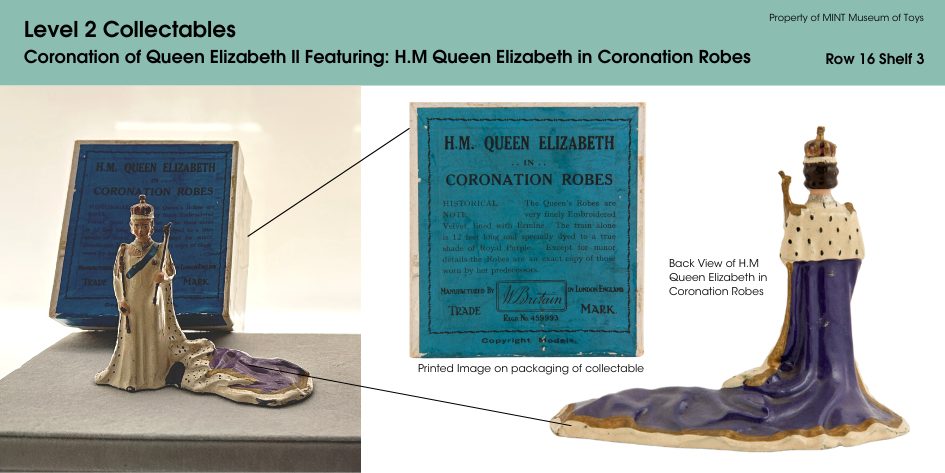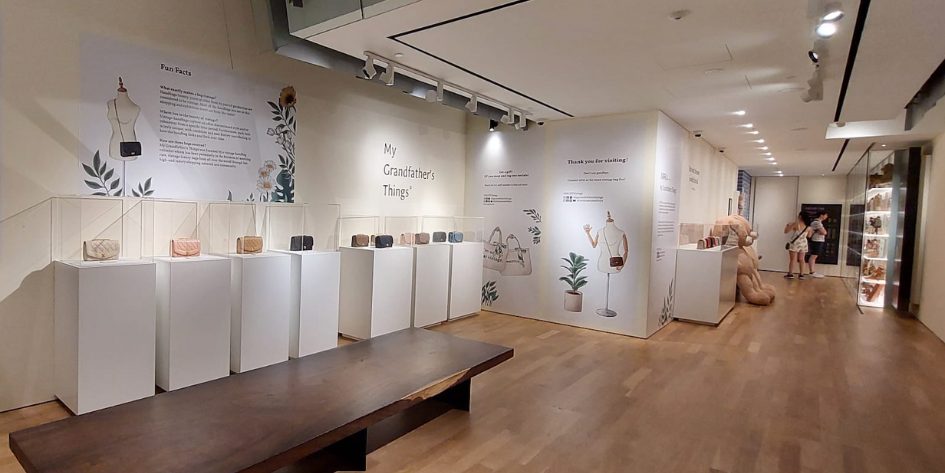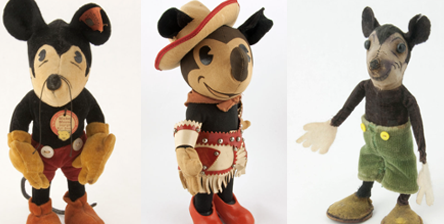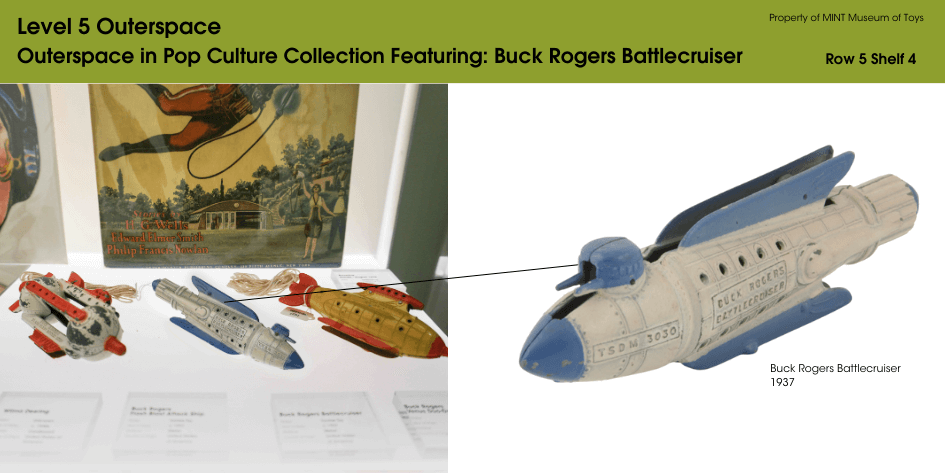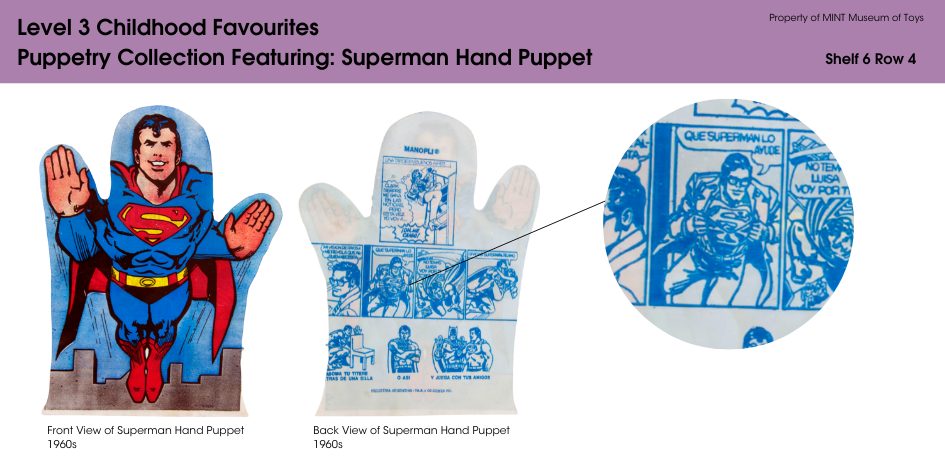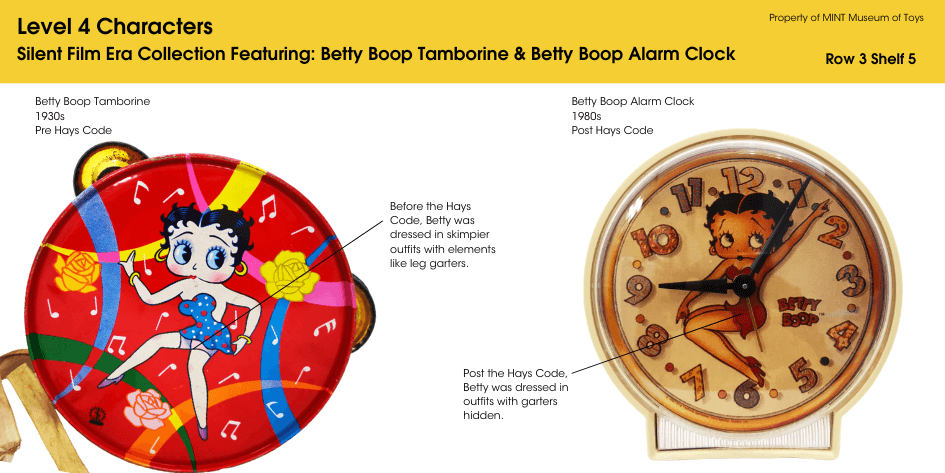The British Raj … As Told By Valuable Historical & Vintage Toys
The British Raj refers to the period between 1858 to 1947 when the Indian subcontinent was under the colonial rule of the United Kingdom. The area governed under the Raj included the modern sovereign states of India, Pakistan, and Bangladesh – however at the time, “India” or the “Indian Empire” was used as an umbrella term to refer to the entire region.
The UK had already seized control over parts of the region as early as 1757, when the British East India Company (BEIC) obtained dominion control over parts of Bengal. Following the Indian Rebellion of 1857 (also known as the Sepoy Mutiny, Indian Mutiny, or First War of Independence), the BEIC’s rule was dissolved with its powers transferred back to the British Crown. This was what officially began the period known as the British Raj, with a special India Office created to oversee governance.
The British Raj brought indelible changes to the subcontinent’s political, economic, and social spheres – for better and for worse. Though the economy grew at a rate of 1% per year, a majority of these earnings went into the pockets of British colonial rulers and administrators rather than Indian colonial citizens, and colonial mismanagement also led to widespread famines.
Conservative pro-British views also led to a rise in Orientalist depictions of India, and an erosion of traditional Indian imagery and symbolism as these were derogatorily seen as ‘backwards’ compared to ‘sophisticated’ British culture and history.
Discover the myriad impacts of the British Raj through these 3 valuable historical and vintage toys:
1. Hindu-Reiner Indien-Tee
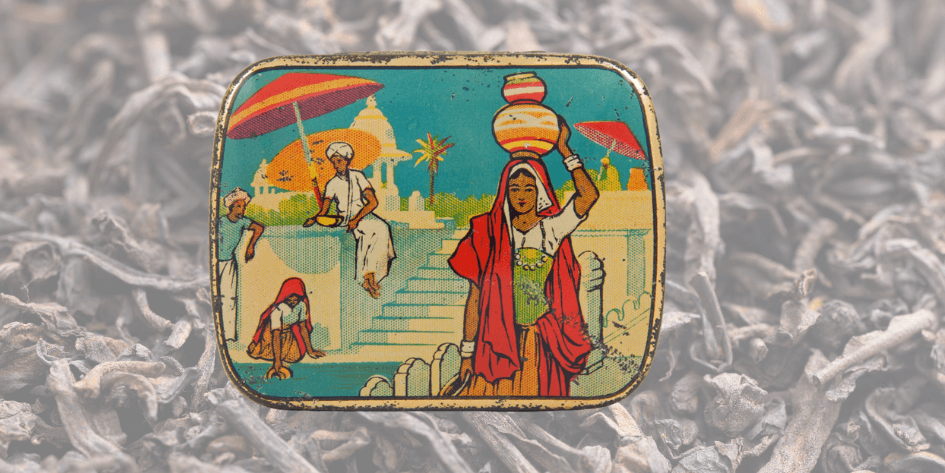
Maker: Pfannkuch G.m.b.H und Company
Year of Make: 1920s
Material: Lithographed Tin
Country of Origin: Germany
The BEIC shipped tea tins and spice boxes like this Hindu-Reiner Indien-Tee worldwide, carrying both the subcontinent’s most valuable natural resources and the cultural impact of the British Raj. As many everyday items such as postcards began to come out of British India, the imagery on them was also influencing popular ideas of South Asia and South Asian people throughout the world. However, these decorations depicted a flattened and exoticised Oriental India with various traditional customs blended into a singular ‘Indian culture’ by the undiscerning British.
The British also sanitised these images in line with their own morality, with long-lasting consequences till today. For example, the sari was not traditionally worn with a blouse, but this change was made during British rule as the British viewed it as vulgar and improper. Till today, many women still wear blouses under their saris although there is a growing awareness of the traditional history behind the garment.
Curious to see more? This vintage biscuit tin can be found in our Vintage Biscuit Tins collection located on the 5th floor rooftop stairwell. Visit our museum today to see them all!
2. Snakes and Ladders
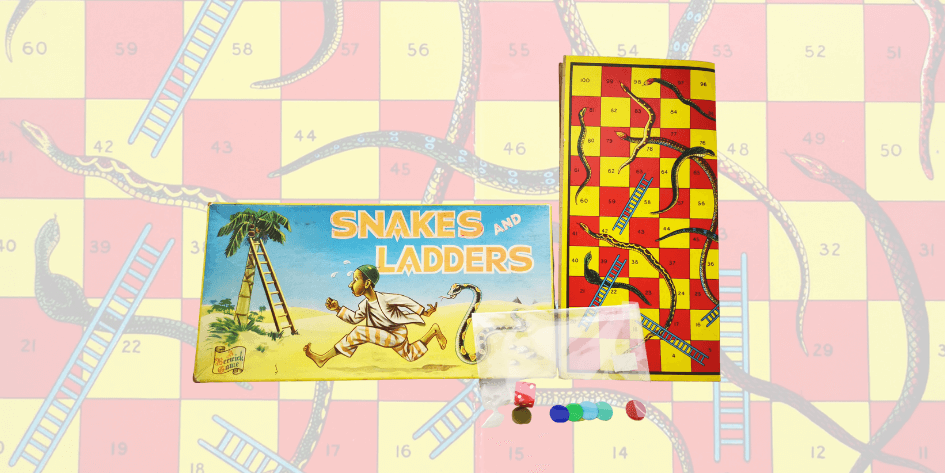
Maker: Berwick’s Toy Co. Ltd.
Year of Make: 1950s
Material: Printed Cardboard
Country of Origin: United Kingdom
Derived from the ancient Indian dice game Gyan Chauper or Gyan Chaupar, Snakes and Ladders originally had deeper spiritual connotations and meanings. The central idea of the game was to move from lower to higher levels of spiritual enlightenment and show how karma affects one’s spiritual journey.
Colonialists during the British Raj originally adapted Gyan Chauper into morality games which had a similar spiritual undertone, but during World War II the morality aspect was removed so companies could print simpler numbered game boards. Following World War II, the secular game Snakes and Ladders became popular worldwide – with few understanding its real origins.
3. Flying Aeroplane Chess
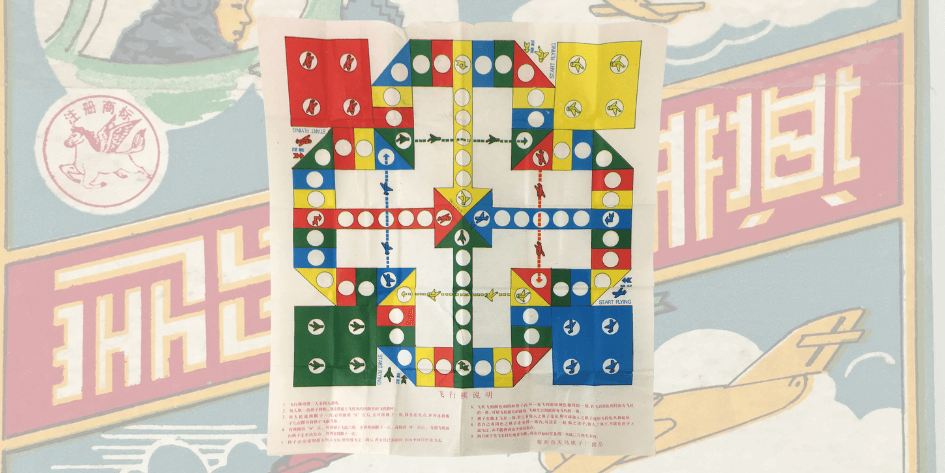
Maker: Trademark = Horse with wings
Year of Make: 1950s
Material: Wood and Paper
Country of Origin: China
Sometimes known as ‘Chinese Checkers’, Flying Aeroplane Chess was originally the ancient Indian game Pachisi. Descriptions of Pachisi can be found even in the Mahabharata, a text compiled between 3rd century BCE and 3rd century CE.
The original game was more elaborate than its contemporary counterpart, with cowrie shells determining how many steps a piece could move and capturing mechanisms for opposing pieces. In some royal courts it even served as a display of wealth and power, with life-sized boards and courtiers or slaves as the players.
However, these grand origins were largely forgotten after the British adapted Pachisi into Ludo during the British Raj, a simpler game with more straightforward mechanisms. Visit our Collectables collection on level 2 to take a look at both this Flying Aeroplane Chess game and vintage Snakes and Ladders game in-person!
Discover History through Vintage Toys
Vintage toys and memorabilia offer us a rare and valuable glimpse into the past, seeing how major historical events could trickle down into everyday objects. These 3 toys are just some of the pieces in the MINT Museum of Toys collection that reveal the widespread influence of the British Raj and its mixed effects on local Indian culture.
Book your tickets or sign up for a virtual museum tour to see more of our collections and exhibitions before you book an actual visit. The Collectables virtual tour even includes an interactive Snakes and Ladders game that’s fun for children and adults alike!

